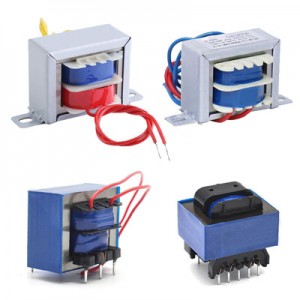Low-frequency transformers play a critical role in the voltage regulation and stability of electronic devices. One common question in transformer design is:
Does the physical size of a low-frequency transformer affect its voltage performance?
This article explores the relationship between transformer size and voltage, offering practical insights for engineers and product designers.
1. How Low-Frequency Transformers Work
Low-frequency transformers operate based on the principle of electromagnetic induction. When alternating current (AC) flows through the primary coil, it generates a magnetic field in the iron core. This field induces a voltage in the secondary coil, and the voltage transformation depends on the ratio of the number of coil turns (turns ratio).
Key components that influence voltage stability and efficiency include:
The iron core (magnetic flux carrier)
The coil size and number of turns
2. How Transformer Size Affects Voltage Output
2.1 The influence of core size
The transformer’s iron core is responsible for channeling the magnetic flux. A larger core supports a stronger and more stable magnetic field, which can enhance voltage output and reduce losses.
If the core is too small, magnetic saturation may occur, leading to reduced efficiency and lower voltage output, especially under load.
2.2 The influence of coil size
The number of turns in the coil determines the voltage transformation ratio. More turns in the secondary coil result in higher output voltage. However, the physical size, diameter, and winding layout of the coil also affect current flow and magnetic coupling.
A well-optimized coil design contributes to:
• Lower energy losses
• Better heat dissipation
• Improved voltage stability
3. Choosing the Right Transformer Size in Real Applications
In practical scenarios, selecting the appropriate transformer size requires a careful balance of multiple factors.
First, power requirements are crucial, as they determine the necessary core cross-sectional area and the coil specifications. The transformer must be capable of handling the intended load without becoming saturated or overheating.
Second, space constraints play a significant role. Larger transformers take up more space, which may not be feasible in compact or tightly integrated systems.
Third, cost-efficiency must be considered. Oversized transformers not only occupy more space but also increase material and production costs unnecessarily.
Finally, load behavior should be evaluated. If a transformer is undersized, it may lead to voltage drops or overheating during operation, compromising the stability and reliability of the device.
In summary, over-sizing leads to wasted space and higher costs, while under-sizing may result in poor performance. Choosing a transformer that is “just right” in size is essential to ensure reliable voltage delivery without unnecessary complexity or expense.
4. Conclusion
Yes—the size of a low-frequency transformer does impact voltage output and performance. By carefully optimizing the size of the core and coils, engineers can ensure stable, efficient voltage transformation.
Understanding this relationship helps in designing electronic devices that are both compact and reliable. As technology continues to evolve, mastering component-level design will remain a key factor in innovation.
Post time: Apr-23-2025


